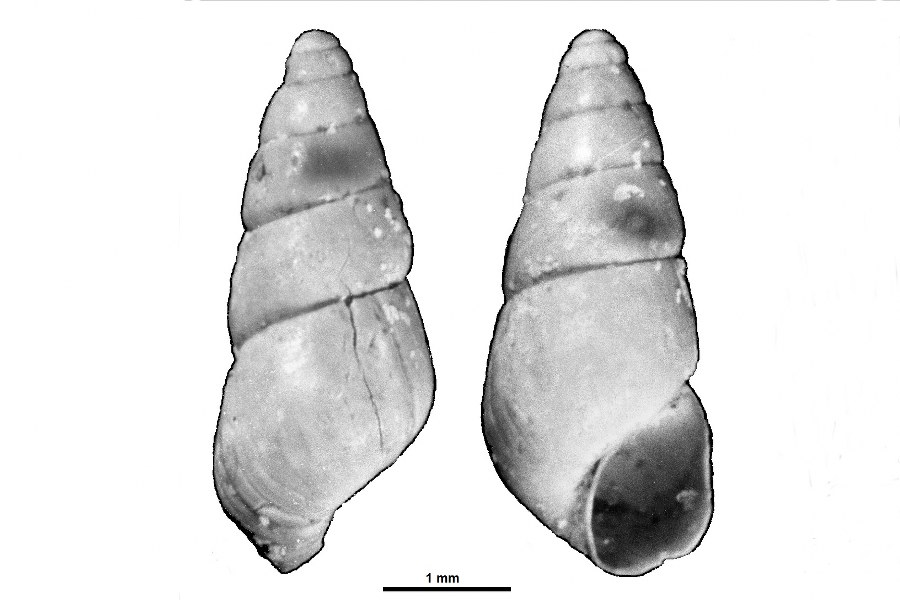Diagnoza
The apex is blunt, with an almost planispiral first whorl. The two earliest whorls are smooth and rounded. From the third whorl on, the lateral flanks are straight or weakly convex. The suture is hardly incised. The demarcation between the lateral flank and the base is angulated in juveniles and continuous in adult specimens. The base is moderately convex. The umbilicus is very small or absent. The shell is smooth apart from orthocline growth lines. The aperture is wide drop-shaped and pointed at the sutural angle. The parietal and columellar parts of the inner lip are inclined to each other.
Porównanie
L. (cf.) laeviuscula var. angulosa represents population variability of the species. L. (cf.) laeviuscula var. angulosa probably represents juvenile individuals..
Autekologia
Występowanie geograficzne
Kłęby (Western Pomerania), Poland
Zasięg czasowy
Upper Oxfordian (Upper Jurassic).
Materiały muzealne
Four specimens in Schmidt collection (BGR X 05185-88) and 28 specimens (BGR, Buchholz, and ZPAL).
Literatura
Gründel, J & Kaim, A. 2006. Shallow-water gastropods from Late Oxfordian sands in Kłęby (Pomerania, Poland). Acta Geologica Polonica 56, 121‒157.
Karczewski, 1980. Gromada Gastropoda Cuvier, 1797 In: Malinowska, L. (Ed.), Budowa Geologiczna Polski. Tom III: Atlas skamieniałości przewodnich i charakterystycznych. Część 2b, Mezozoik, Jura, 414‒434. Wydawnictwa Geologiczne; Warszawa.
Karczewski, 1988. Class Gastropoda Cuvier, 1797 In: Malinowska, L. (Ed.), Geology of Poland. Volume III: Atlas of guide and characteristic fossils. Part 2b, Mesozoic, Jurassic, 296-313. Wydawnictwa Geologiczne; Warszaw
Schmidt, M. 1905. Über Oberen Jura in Pommern. Abhandlungen der Königlich Preußsischen Geologischen Landesanstalt und Bergakademie, Neue Folge, 41, 1-222.

